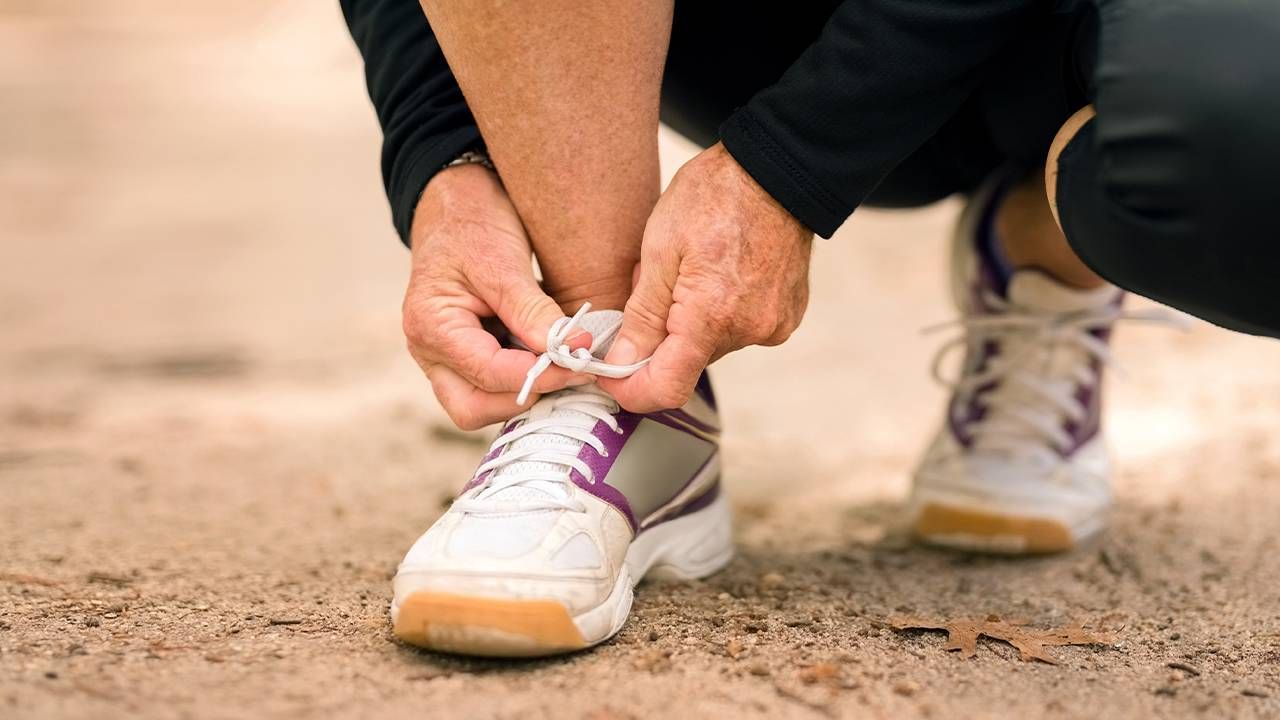Take These 4 Steps for Happier Feet
Like tires on a car, your feet are the foundation of your body. Here's how to keep them healthy.
When I noticed Dr. Jill Biden walking in pointy-toed high heels in her husband's inaugural parade, I thought, her feet must be killing her! Not that I know much about her, but as a woman only a few years her junior, I know I can't wear those kinds of shoes for very long anymore.

That's because of a problem impacting nearly all mature adults — fat pad atrophy, when the cushion on the balls of our feet thins out, causing inflammation and marked tenderness.
Like every other part of our body, our feet change as we get older. No surprise there: not only do we spend a lot of hours just standing around, but by the time we turn 50, most of us have logged 75,000 miles strolling, running and bouncing in all kinds of shoes (or not), according to the American Podiatric Medical Association.
Most of our foot ailments can be minimized or even averted with early treatment and routine maintenance.
And although we schedule regular exams for our teeth, eyes, and general well-being, our feet, our literal support, usually get the short shrift.
Yet, "To pay attention to your feet is to pay attention to your overall health," says Marian Hannan, professor of medicine at Harvard Medical School and senior scientist at the Marcus Institute for Aging Research.
Why we neglect them is anybody's guess, particularly since a 2018 study by the podiatric association found that as many as 75% of respondents reported some sort of foot impediment. Association spokesman Dr. Alex Kor sees this repeatedly in his practice.
"Patients come in and say, 'Oh, I've had this problem for a year, and I thought it would go away,'" he says. Brushing it off as "just part of growing old" is a familiar excuse.
In addition to loss of padding, other oft-dismissed conditions in older adults include aching bunions, toe deformities and mid-foot soreness. For patients with diabetes and those with neuropathy (nerve damage) and impaired circulation, though, ignoring lower limb infirmities can have dire consequences.
The good news is that experts say most of our foot ailments can be minimized or even averted with early treatment and routine maintenance.
Follow these four steps to put your best foot forward now and in the future.
1. Get a Foot Inspection
Chances are, unless you have a chronic disorder involving your feet, your primary doctor doesn't inspect them or your gait during a standard checkup.
"Some patients tell me that they've never been asked to take their shoes and socks off," says Kor. The reason, Hannan asserts, is that "the vast majority of physicians in the United States have never had a day of training in the foot."
If you have foot issues, speak up and get a referral to a podiatrist or orthopedist. Some health insurance plans won't pay for a visit to a foot specialist unless you first see your primary doctor, notes Kor, but although Medicare is very restrictive in covering certain services, a referral isn't needed for an initial appointment.
A shoe should be rigid in the area between the heel and the ball of the foot and bend only at the joints at the base of the toes. This is crucial for maintaining balance.
2. Adopt a Foot-Friendly Lifestyle
The pounds we carry unquestionably affect our foot health, says Kor, whose association found that 74% of overweight Americans surveyed say they experience foot pain.
A little over half of U.S. adults surveyed confess that discomfort due to excess weight limits their everyday activities. Which means physical fitness also falls by the wayside.
Instead of giving up, Kor suggests modification. Habitual exercisers can switch to running or walking every other day instead of on consecutive days. Or, log the same miles but spread them out more over the week. Non-weight-bearing workouts — biking, swimming, water aerobics, and elliptical machines — are alternatives for everyone.
Another risk to our foot health is heavy alcohol consumption, a trigger for neuropathy, especially as we age. Smoking, Kor stresses, is "probably the No. 1 reason" for poor circulation and its accompanying agony.
In extreme cases, decreased blood flow leads to amputation if not treated promptly (my mom confronted this scary possibility when she finally sought relief for her sensitive, discolored toe, a sign that she needed a stent in one leg).
3. Buy Shoes That Fit Well
Our footwear, says Hannan, is "the canary in the coal mine," an early warning system that something might be amiss with our feet. Shoes that begin to feel uncomfortable may be the first indication of trouble, and sometimes the fix can be as simple as purchasing new ones.
Follow the usual tips when buying them — shop in the afternoon when your feet are largest, get them professionally measured, make sure the toe box is roomy enough — then put them to the flex test.
A shoe should be rigid in the area between the heel and the ball of the foot and bend only at the joints at the base of the toes. This is crucial for maintaining balance, something to keep in mind since falls are the leading cause of injuries to those 65+, according to the Centers for Disease Control and Prevention (see the American Podiatric Medical Association's Seal of Acceptance/Approval Program for shoe recommendations).
For those looking for more padding, over-the-counter custom orthotics "have become pretty good," Kor says. He recommends bringing all footwear and inserts to a podiatrist for an expert opinion. But don't go overboard with the extra cushioning, cautions Hannan.
"If you don't need the support, you're taking away musculature that will help keep your feet healthy," she says.
4. Embrace Foot Care
The most many of us do for our feet is clip the nails — and even that we often get wrong (by cutting them too short or, conversely, not enough). That job might get harder as back problems worsen or we become less limber and can't reach our toes.
Medicare doesn't cover nail upkeep except in the case of some chronic illnesses, so both Hannan and Kor agree a salon pedicure or less-expensive nail trim is a good alternative for men and women (the American Podiatric Medical Association offers guidelines for salon and home treatments).
Cracks in the skin, caused by dryness, provide the perfect entryways for bacteria. Consistent moisturizing — but not continual soaking, which actually is dehydrating — lessens the risk.

Read More

